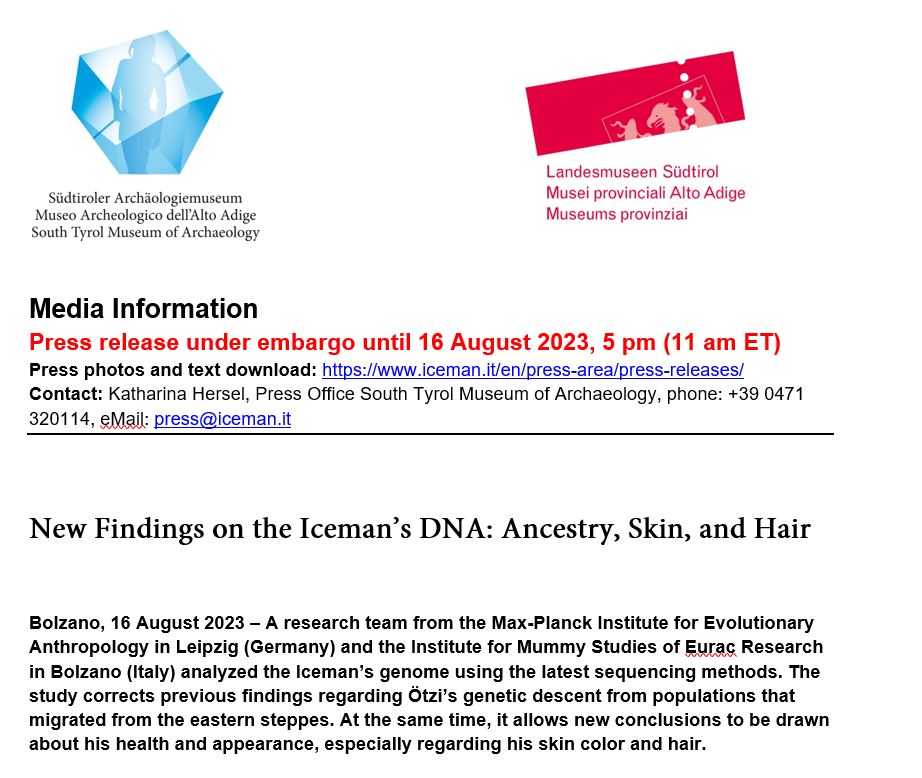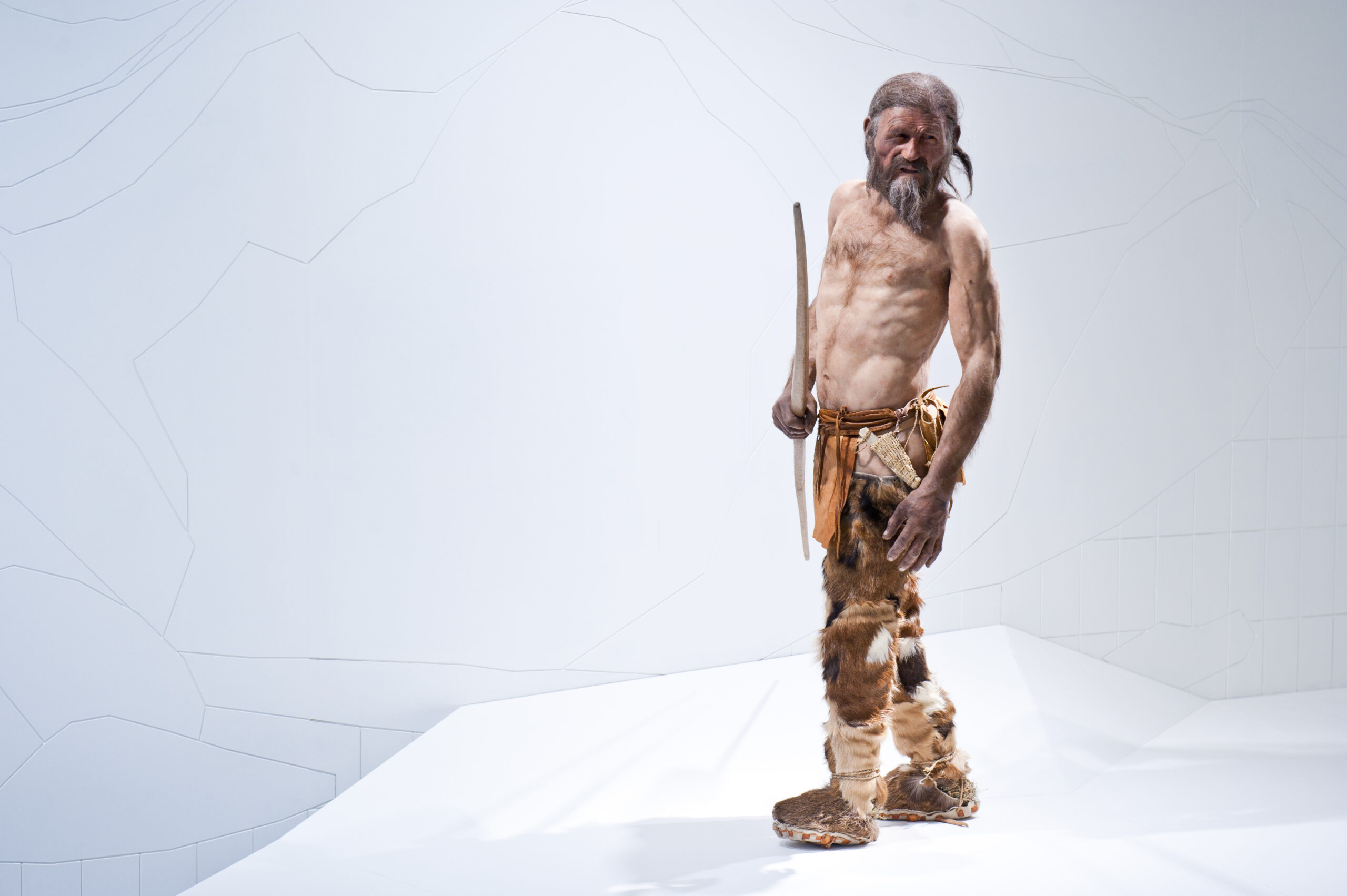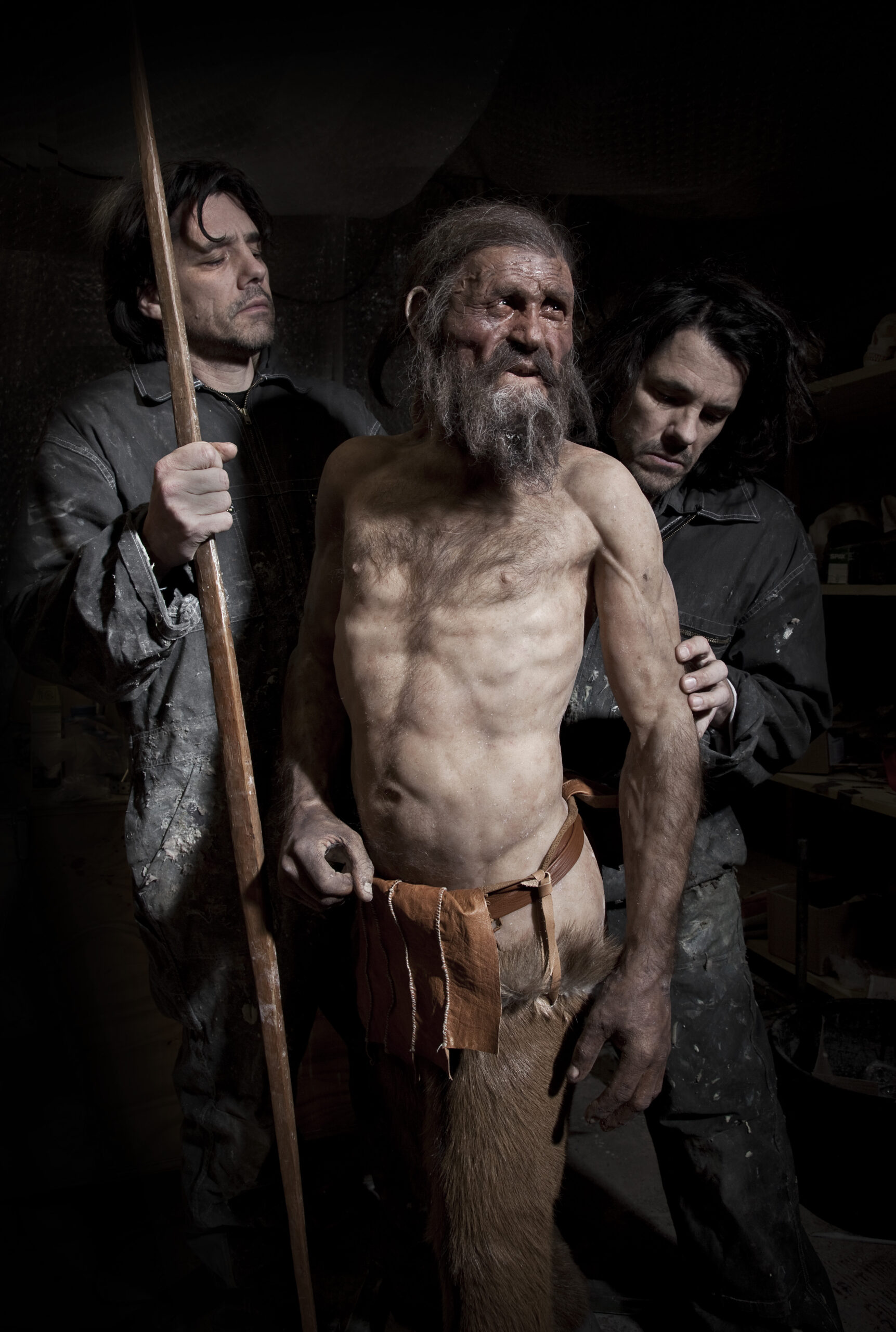.
New Findings on the Iceman’s DNA:
Ancestry, Skin, and Hair
Bolzano, 16 August 2023 – A research team from the Max-Planck Institute for Evolutionary Anthropology in Leipzig (Germany) and the Institute for Mummy Studies of Eurac Research in Bolzano (Italy) analyzed the Iceman’s genome using the latest sequencing methods. The study corrects previous findings regarding Ötzi’s genetic descent from populations that migrated from the eastern steppes. At the same time, it allows new conclusions to be drawn about his health and appearance, especially regarding his skin color and hair.
The Iceman’s genome was first decoded in 2012, providing important findings for research on prehistoric Europeans. Advances in sequencing technology and a growing dataset of over 10.000 prehistoric individuals studied from across Europe have now enabled the research team to reconstruct the Iceman’s genome more accurately and to compare it with contemporaries. These findings complete and expand the image we have of Ötzi.
The original hunter-gatherers of Western Europe gradually merged into the early farming populations who migrated from the Middle East (Anatolia) around 8,000 years ago. Around 4,900 years ago herders from the steppes arrived from Eastern Europe. Contrary to the first study, the team no longer found any genetic traces of these Steppe Herders. Instead, in comparison with other people from the Copper Age, Ötzi's DNA had a higher proportion of genetic material from “Anatolian” farmers. This indicates that the Iceman had ancestors who farmed and lived a relatively isolated life in the Alps.
Further hereditary factors that emerged during the study included an increased risk for obesity and a predisposition to adult-onset diabetes. It is likely these factors had no impact on the Iceman’s lifestyle, which was quite active by today’s standards.
The study also produced exciting results about Ötzi’s appearance. His skin type, which was already determined to be Mediterranean-European in the first genome analysis, may have been darker than was previously assumed.
With regard to the hair of the Iceman, genetic predispositions to male pattern balding were found for the first time. Whether this predisposition was apparent in the Iceman’s lifetime and how pronounced it was cannot be determined from the study. At any rate dark locks of hair measuring 9 cm long were found near the mummy.
Elisabeth Vallazza, director of the South Tyrol Museum of Archaeology, is therefore cautious in interpretating the findings: “The current study identifies certain genetic hereditary factors and discusses how Ötzi may have looked. And I will be delighted if future research helps us obtain a more concrete image of this person who lived more than 5,000 years ago.”
In relation to the reconstruction at the museum, she specifies: “The famous figure in the museum is an attempt at interpretation, a suggestion of how we imagined the Iceman during his lifetime. The figure was created in 2011 by the palaeo-artists Adrie and Alfons Kennis based on research that had been conducted at the time. The main purpose was to show that Ötzi was a modern human. Middle aged, tattooed, wiry, weathered, a person like you and me. There are currently no plans to revise the reconstruction.”
The original publication appeared in Cell Genomics on 16 August 2023 (accessible after embargo expiration).
Link to the news release by Max Planck Institute and Eurac Research
PHOTOS
Reconstruction of Ötzi the Iceman at the South Tyrol Museum of Archaeology by Kennis & Kennis, 2011 (c) South Tyrol Museum of Archaeology / foto-dpi.com
Reconstruction of Ötzi the Iceman with paleoartists Alfons and Adrie Kennis (c) South Tyrol Museum of Archaeology / Heike Engel 21lux
The use of the images is free of charge if the copyright is correctly indicated.
PRESS CONTACT
Katharina Hersel
South Tyrol Museum of Archaeology
Museumstr. 43, I-39100 Bolzano
T +39 0471 320114
press@iceman.it
www.iceman.it
#OetziTheIceman
DOWNLOAD FILES






